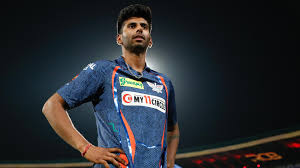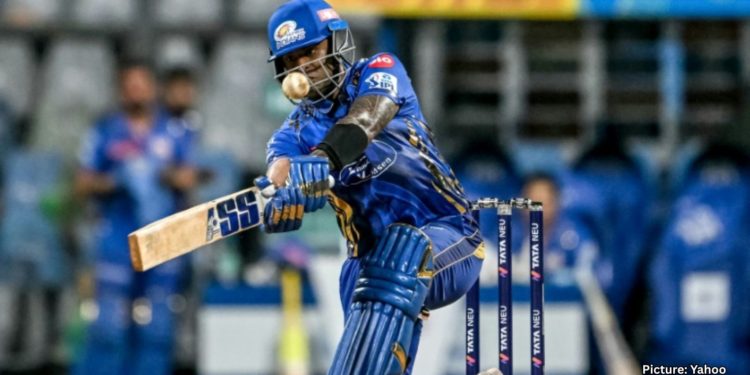After a six-month hiatus, Mayank Yadav, known for his explosive pace, made his return to the cricket field. Despite a slower delivery, he managed to take two wickets with figures of 4-0-40-2 in his first T20 match of the season. This was only the second time in his career that he had bowled the opening over of a T20 game. The highlight of his comeback was his use of slower balls, which earned him his first T20 wicket with a ball-by-ball record. In fact, the match against Mumbai Indians at Wankhede Stadium on Sunday saw him bowl eight slower balls, the most he has ever bowled in a single T20 match.
All eyes are on the speed gun as Mayank takes his run-up to bowl. His impressive speed of 156.7kph and remarkable accuracy caught the attention of selectors, earning him a coveted fast bowler’s central contract. However, this exceptional pace has also taken a toll on his body, resulting in frequent injuries that have limited him from playing longer formats. Out of his total 36 representative matches, 18 are T20s while only one is first-class.
During the 2024-25 domestic season, Mayank was undergoing rehabilitation for a back injury at the BCCI’s Centre Of Excellence (CoE) in Bengaluru. However, his return to action was delayed by a minor incident in which he stubbed his toe against his bed, causing an infection. LSG head coach Justin Langer had mentioned this setback in early April.
It was clear from the start that Mayank would gradually return to playing after being sidelined for six months due to his recent injury. His fastest delivery against MI clocked in at 142.7kph, which was typically his slowest pace. However, he showed strategic thinking by throwing in a wide slower ball after giving up two sixes to Rohit Sharma in the third over, resulting in Rohit’s dismissal.
In spite of this, Mayank’s performance was expensive as he gave away 13 runs in his second over and 15 runs in his third over. Nevertheless, he made an impressive comeback in the 16th over by bowling out Hardik Pandya with a reverse delivery and expertly using slower balls to restrict Suryakumar Yadav and Naman Dhir’s scoring. His last over remained free of any boundaries.
Should Mayank successfully develop a more sustainable bowling action, he could focus on improving his strength to increase his pace upon returning to the game. Nevertheless, it is important to note that there is a significant gap between bowling in the early 150s and the mid-140s, requiring greater precision, command and variation to achieve success at the highest level.



















